Hadal-Narayanpur, South Bengal – Home to some of the finest and ancient terracotta temples
Hadal-Narayanpur in Bankura district is home to some of the finest and ancient terracotta temples of Bengal. Steeped in history, the twin villages are a one-and-half-hour drive from Bankura town. You have to get down at Dhagaria, the nearest rail or bus stop, and take a vanrickshaw from there.
Located on the banks of Bodia river, Hadal-Narayanpur is said to have been established by “Murokata” Chakraborty, who had apparently cut down trees to start the village, thus acquiring the moniker. The road is scenic and the village looks prosperous.
The first temple that houses the idol of Bramhani Devi is not like the traditional structure The entrance has a panel of Shiva dancing with the body of Sati on his shoulder. The idol is made of kashthi pathar (black touchstone) and surprisingly has a strong resemblance to south Indian idols. There are small female figures at the foot of the main idol. This statue is said to be from the Pal era of Bengal.
Legend has it that after the village was established, a woman named Rani Moira dreamt that an idol was stuck in the banks of the Damodar. People went looking for the idol and found it beneath the mud beside the river. The idol was brought out and established as Bramhani Devi.
After the Bramhani Devi temple visit the three Mandal family temples — Barataraf, Mejotaraf and Chhototaraf. The Mandals were one of the early settlers in the area. At Barataraf, there is a huge rasmancha that resembles a 17-ratna terracotta structure near the entrance. Look out for sculptures depicting Durga and her family and Vishnu reclining on snake Ananta (Vishnu’s Ananta sayane posture).
There is a large thakurdalan inside, where the main attraction is the 1806-built Pancha Chura terracotta Radha Damodar temple and two small Shiva temples. The temples contain a few but significant sculptures.
Make sure to get a glimpse of the ratha (chariot) made of bell metal inside an enclosure. There are figures engraved on the chariot representing Shiva, Kali and the Narasimha avatar of Vishnu. On both sides of the ratha are human figures with heads upside down.
Visit the Radha Damodar temple of Mejotaraf next, which is a navaratna temple. Located near a water body, the temple has terracotta carvings depicting the battle of Ramayana. Other significant carvings are Ananta sayane Vishnu and Ganesh sitting on a giant mouse.
The terracotta temple of the Mandal family’s Chhototaraf is also unique. The first thing to be noticed is the uniqueness of the structure. It is similar to a church. Although the main panel of the temple displays a scene from The Mahabharata where Arjun is targeting the fish eye at Draupadi’s swayamvar, there are terracotta motifs on the walls displaying British lifestyle too.
Outside the premises of Chhototaraf is a decaying pancharatna temple that has a sculpture of two Ananta Sayane Vishnu facing each other. Nearby is an aatchala temple.
Trip trivia: Rampur — the birth place of mathematician Shubhankar Das — is very close to Hadal-Narayanpur. It may be worth mentioning that Shubhankar Das was the creator of “Subhankari”, an almost forgotten tradition of computation prevailing in pre-colonial Bengal.
How to go ?
Take the Howrah-Chakradharpur Passenger to Bankura. From Bankura take a local train to Dhagaria. Hire a vanrickshaw at the station to reach Hadal-Narayanpur.
You can also reach Bankura at night by the Howrah Purulia Express and leave for Hadal-Narayanpur early next morning in a hired car.
Where to stay ?
There are several budget hotels in Bankura. Hadal-Narayanpur has no accommodation facility. For accomodation in Government Guest Houses in Bankura visit www.westbengaltourism.gov.in
There are also many private hotels.

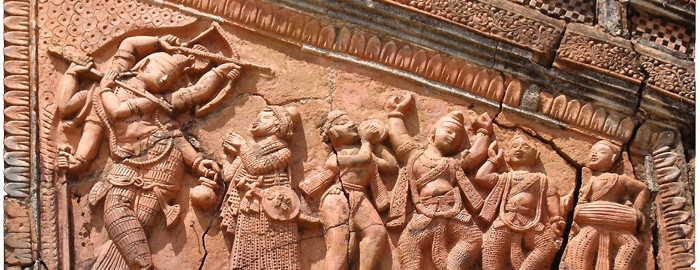
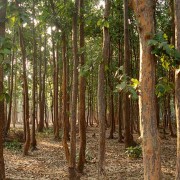
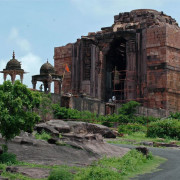
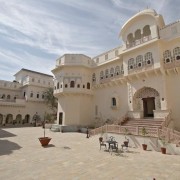
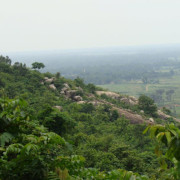
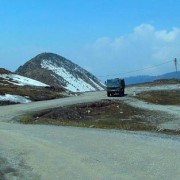
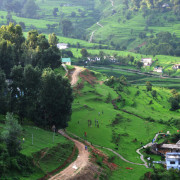
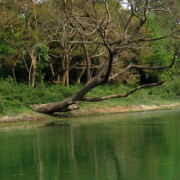
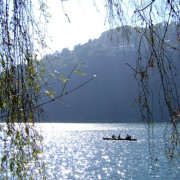


Leave a Reply
Want to join the discussion?Feel free to contribute!